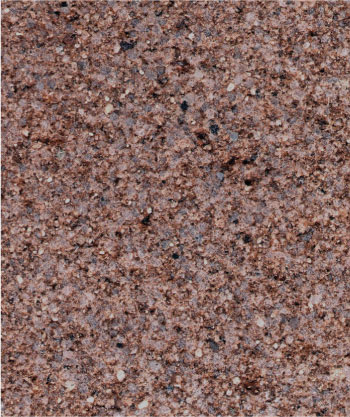CO₂ Storage

Sandstone rock - typical storage rock.
Image courtesy of British Geological Survey.
Injection
The oil and gas industry has years of experience injecting CO₂ underground into geological formations in a process used to enhance oil recovery (EOR). Millions of tonnes of CO₂ are injected annually under regulations which protect local communities and the environment. As oil and gas has become more difficult to access, the industry has rapidly developed precise drilling practices to meet the challenge. This technology is being deployed to ensure CO₂ storage takes place safely and securely.
Natural Trapping Mechanisms
Oil and gas have remained underground for millions of years. The same natural conditions allow injected CO₂ to be stored securely. Once CO₂ is injected deep underground (typically more than 800 meters) it is absorbed and then trapped in minute pores or spaces in the rock structure. Impermeable caprock acts as a final seal to ensure safe CO₂ storage for millions of years.
Structural trapping - at the storage site the CO₂ is injected under pressure deep down into the ground until it reaches the geological storage formation. The rocks of the storage formation are like a rigid sponge; they are both porous and permeable. Fluid CO₂ tends to rise towards the top of the formation until it reaches an impermeable layer of rock overlying the CO₂ storage site. This layer, known as the caprock, securely traps the CO₂ in the storage formation. Structural trapping is the same mechanism that has kept oil and gas securely stored under the ground for millions of years.
Residual trapping - another natural process further traps the CO₂. As the injected CO₂ moves up through the geological storage site towards the caprock some is left behind, trapped in the microscopic pore spaces of the rock. This process is similar to air becoming trapped in a sponge.
Dissolution and mineral trapping – two additional mechanisms also trap CO₂. Over time the CO₂ stored in a geological formation will begin to dissolve in the surrounding salty water. The salty water combined with the CO₂ becomes heavier and sinks towards the bottom of the formation over time. This is known as dissolution storage. Mineral storage occurs when the CO₂ held within the storage site binds chemically and permanently with the surrounding rock.
Depleted hydrocarbon reservoirs, such as oil and gas fields, are highly suited to such geological CO₂ storage. Other potential storage sites are saline formations – permeable rock formations, which contain salty water in their pore spaces - and unminable coal beds. According to the Intergovernmental Panel on Climate Change (IPCC), such geological formations could provide storage space for at least 2,000Gt (billion metric tonnes) of CO₂.
Learn more about CO₂ capture and storage by visiting www.ccsbrowser.com
Final results book available.
View...
A summary of 20 years of CCP - as shown at GHGT-15. View...
Publication Downloads on CO₂ Capture
Background Information on CO₂ Capture
FAQs on CO₂ Capture
CCP Activities on CO₂ Capture
Publication Downloads on storage, monitoring and verification (SMV)
Background Information on storage, monitoring and verification (SMV)
FAQs on storage, monitoring and verification (SMV)
CCP Activities on storage, monitoring and verification (SMV)
Publication Downloads on policies and economics
FAQs on policies and economics
CCP Activities on policies and economics
